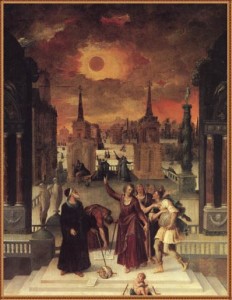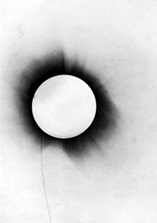 Solar eclipse visible from Reykjavik Friday morning, March 20th. A rare spectacle not to miss.
Solar eclipse visible from Reykjavik Friday morning, March 20th. A rare spectacle not to miss.
“The solar eclipse will be impressive, beautiful and captivating at the same time” says Sævar Helgi Bragason, chairman of Stjörnuskoðunarfélag Seltjarnarness (e. Seltjarnarness’s Society of Astronomy and Stargazing). The solar eclipse of March 20th will be a partial eclipse where the moon will cover 99,4% of the sun in the Eastern part of Iceland. In Reykjavik the moon will cover 97,5% of the sun, starting on Friday morning at 8.38 and ending at 10.39.

According to Sævar Helgi this is almost a total eclipse and that makes it rare. “We have not seen this kind of solar eclipse in 61 years or since June 30th 1954. The next will be on August 12th 2026 and that will be a total solar eclipse visible from the Western-part of Iceland.”
Members of Stjörnuskoðunarfélag Seltjarnarness will gather in front of The University of Iceland’s Main building. “We will have telescopes and of course information for those who are interested as well as safe equipment for those who want to look at what is going on,” says Sævar Helgi.
He points out that it can be quite dangerous to look directly at the sun without proper protection. Special solar eclipse glasses make the best protection but he say’s they might not be necessary as the weather-forecast indicates Friday morning will be cloudy. “If the weather will be as predicted the clouds will filter the sunlight and people can look to the sky, at the sun and see what’s going on. We don’t have to have fair sky’s to see the solar eclipse, just as long as we can see the sun through the clouds.”
Sævar Helgi is expecting a good turnout in front of the University of Iceland’s Main building. “People are welcome to join us and we are looking forward to experiencing this spectacle.”
Fun facts about solar eclips

- Depending on the geometry of the Sun, Moon, and Earth, there can be between 2 and 5 solar eclipses each year.
- Totality occurs when the Moon completely obscures Sun so only the solar corona is showing.
- A total solar eclipse can happen once every 1-2 years. This makes them very rare events.
- If you lived at the North or South Pole, you would see only partial solar eclipses. People in other parts of the world can see partial, total, annular, and hybrid eclipses.
- The longest a total solar eclipse can last is 7.5 minutes.
- The width of the path of totality is usually about 160 km across and can sweep across an area of Earth’s surface about 10,000 miles long.
- Almost identical eclipses occur after 18 years and 11 days. This period of 223 synodic months is called a saros.
- During a total solar eclipse, conditions in the path of totality can change quickly. Air temperatures drop and the immediate area becomes dark.
- If any planets are in the sky at the time of a total solar eclipse, they can be seen as points of light.
More fun facts at spacefacts.com.
Main Photo of Sævar Helgi: Courtesy of Stjörnuskoðunarfélag Seltjarnarness.


